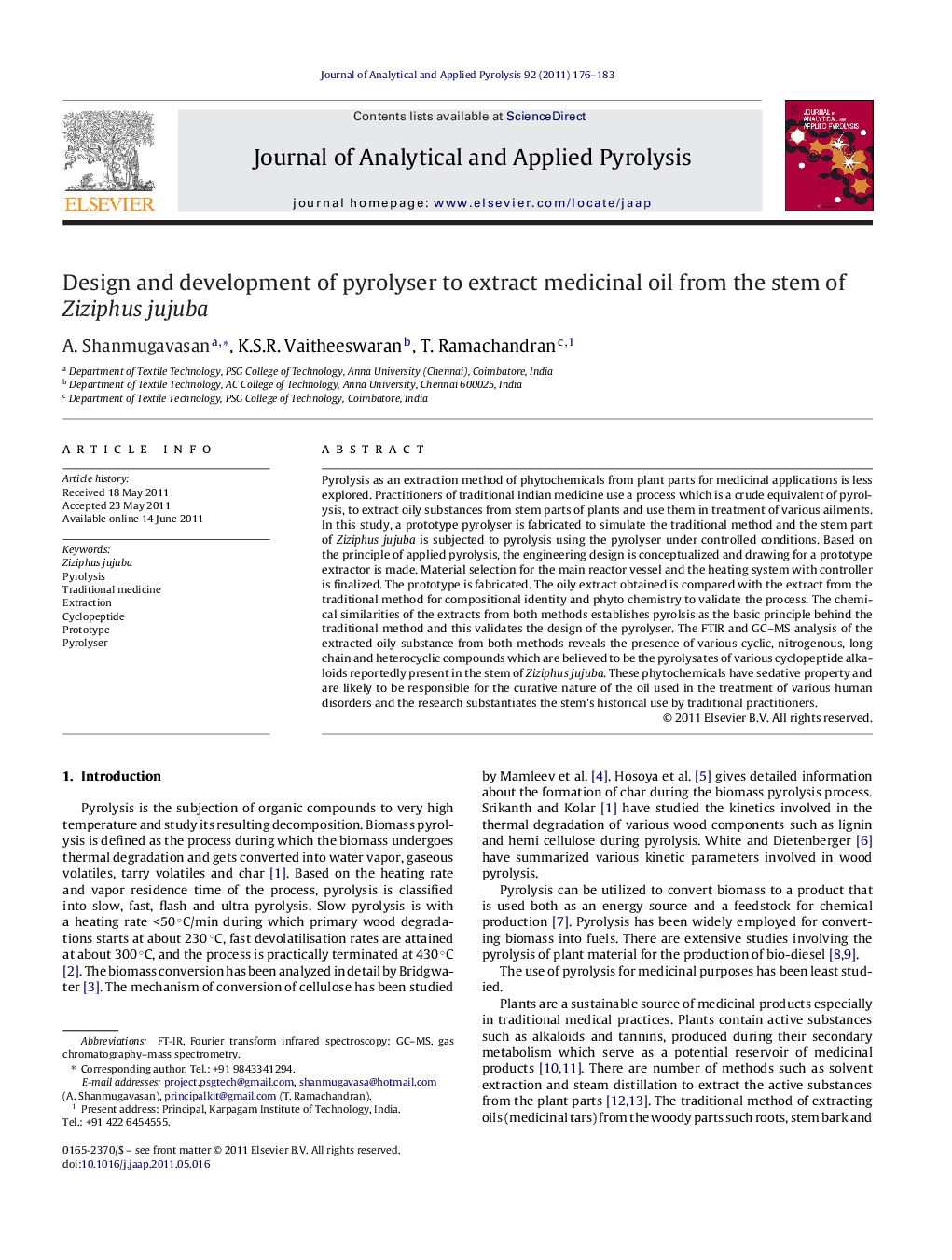| Article ID | Journal | Published Year | Pages | File Type |
|---|---|---|---|---|
| 1197872 | Journal of Analytical and Applied Pyrolysis | 2011 | 8 Pages |
Pyrolysis as an extraction method of phytochemicals from plant parts for medicinal applications is less explored. Practitioners of traditional Indian medicine use a process which is a crude equivalent of pyrolysis, to extract oily substances from stem parts of plants and use them in treatment of various ailments. In this study, a prototype pyrolyser is fabricated to simulate the traditional method and the stem part of Ziziphus jujuba is subjected to pyrolysis using the pyrolyser under controlled conditions. Based on the principle of applied pyrolysis, the engineering design is conceptualized and drawing for a prototype extractor is made. Material selection for the main reactor vessel and the heating system with controller is finalized. The prototype is fabricated. The oily extract obtained is compared with the extract from the traditional method for compositional identity and phyto chemistry to validate the process. The chemical similarities of the extracts from both methods establishes pyrolsis as the basic principle behind the traditional method and this validates the design of the pyrolyser. The FTIR and GC–MS analysis of the extracted oily substance from both methods reveals the presence of various cyclic, nitrogenous, long chain and heterocyclic compounds which are believed to be the pyrolysates of various cyclopeptide alkaloids reportedly present in the stem of Ziziphus jujuba. These phytochemicals have sedative property and are likely to be responsible for the curative nature of the oil used in the treatment of various human disorders and the research substantiates the stem's historical use by traditional practitioners.
Graphical abstractThe stem of Ziziphus jujuba is extracted using a prototype self-fabricated pyrolyser, which is based on the principle of pyrolysis. The visual and chemical similarity of the extracts obtained by the scientific method and by the conventional method, validates the design of the pyrolyser. GC–MS analysis of the oily extract shows the presence of pyrolysate derivatives of cyclopeptide alkaloids which is sedative in nature.Figure optionsDownload full-size imageDownload as PowerPoint slide
